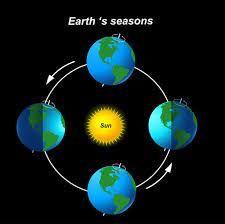Feel free to use or edit a copy
includes Teacher and Student dashboards
Measures 3 skills from
- edit the questions
- save a copy for later
- start a class game
- automatically assign follow-up activities based on students’ scores
- assign as homework
- share a link with colleagues
- print as a bubble sheet
- Q1
What is the lowest point of a wave called?
Wavelength
Crest
Trough
Amplitude
30sS6E3d - Q2
What is the highest point of a wave called?
Trough
Wavelength
Crest
Wave height
30sS6E3d - Q3
What do we call the measurement made from crest to crest or trough to trough?
Wave Height
Distance
Amplitude
Wavelength
30sS6E3d - Q4
What do we call the measurement from a crest to a trough?
Wave Height
Wavelength
Horizontal measurement
Amplitude
30sS6E3d - Q5
The gravitational pull the moon exerts on the Earth is
Greater on solids than liquids
The main cause of high and low tides
Responsible for Tsunamis
Responsible for longshore currents
30sS6E3d - Q6
Which of the following best describes the water found in the deep currents of the Atlantic Ocean
Warm with low salinity
Cold with high salinity
Warm with high salinity
Cold with low salinity
30sS6E3d - Q7
What kind of tide is produced when the Earth, Moon, and Sun are aligned?
High Tide
Low Tide
Spring Tide
Neap Tide
30sS6E3d - Q8
What kind of Tide will occur when the moon is at position F?
Spring Tide
Neap Tide
30sS6E3d - Q9
What tide type occurs at positions 1 and 3?
high tide
low tide
30sS6E3d - Q10
Which direction do most warm currents move?
Away from the Earth's poles
Away from cold currents
In the same direction as waves
Away from the Earth's equator
30sS6E3d - Q11
What type of ocean movement varies depending on the current moon phase?
Current
Wave
Tide
30sS6E3d - Q12
Which type of tides has a smaller tidal range due to the Earth, Sun, and Moon forming a right angle?
High/Low tides
Neap Tides
Spring Tides
30sS6E3d - Q13
Which type of tides has a larger tidal range due to the Earth, Sun, and Moon forming a line?
Spring Tide
High/Low tides
Neap Tide
30sS6E3d - Q14
Due to the Coriolis Effect, water in the Northern Hemisphere moves
Counter Clockwise
Clockwise
Both
Like a ninja
30sS6E3d - Q15
Cold ocean currents generally come from
The Equator
The North Pole
Both the North and South Poles
The South Pole
30sS6E3d
